Updated Blog Post – Review of Page Turners
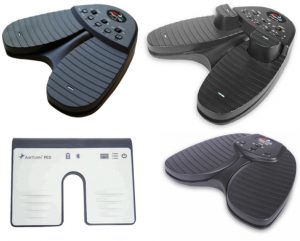 Back in December last year I wrote “A Review of Page Turners – Not the Human Variety“. Since then there have been a couple of new pedals launched and one is no longer being manufactured. This is an update to that article.
Back in December last year I wrote “A Review of Page Turners – Not the Human Variety“. Since then there have been a couple of new pedals launched and one is no longer being manufactured. This is an update to that article.
So if you are thinking of moving to electronic music display or are already a user, I thought a review of the current crop of (non-human) page turners might be helpful. I am only reviewing ones I have personal experience of and the opinions expressed in this blog post are mine. These pedals all work really well with Power Music and most other music display apps. If you have other experiences with page turners please feel free to post a comment.
Touchscreen/keyboard or mouse
Of course if you are using a device with a touchscreen – iPad, Windows tablet, all-in-one PC etc, there is always the option of just tapping or swiping the screen to turn the page. It still involves taking your hands off the instrument but the speed of page turning makes this a usable option. Likewise you could use a keyboard or mouse to turn the pages but there often isn’t really room to use them when performing.
How page turners work
I want to have a look at a range of page turner devices. All page turners operate by sending keystrokes to the software displaying the music. So it is important that the device you choose sends the correct page turning keystrokes – these are usually page up/page down or arrow up/arrow down, but other keys are sometimes used – Enter, space bar etc. All pedals come pre-programmed with a set of user selectable keystrokes and some pedals are also programmable using a utility app.
Modern foot pedal page turners are wireless – using Bluetooth technology. Unfortunately the only wired USB foot pedal – the BiLiPRO which was a very popular pedal, is no longer being manufactured so only wireless foot pedals are reviewed here.
Bluetooth wireless pedals
- No cables when in use.
- Battery powered, rechargeable or standard battery.
- Require initial pairing with the device running the display software.
- Be aware there are different Bluetooth standards which are not always compatible. The latest Low Energy, Bluetooth Smart 4.0 (4.1) pedals will not work with a PC or tablet that has only Bluetooth 3. However a Bluetooth 3 pedal will work on devices that have Bluetooth 4.0 and up. For Windows device you can always get a Bluetooth 4.0 USB “dongle” which will allow the use of all of these pedals. Only iPads newer than the iPad 2 will work with Bluetooth 4.0.
- Most Bluetooth pedals have a “sleep” mode where the pedal goes into a power-saving mode after about 30 minutes of inactivity. A single tap to the pedal will instantly re-awaken it.
- When the battery needs replacing or charging, low battery conditions are indicated by a flashing LED on the pedal giving ample warning to replace the battery or charge the device. We would never recommend using a pedal connected to a mains charger when performing as this can lead to damage to the pedal or cable by a misplaced foot!
So here are some pedals to consider – they can all be found on the Cambron website where we also do bundles with Power Music, a pedal and/or a scanner at reduced prices. Read more
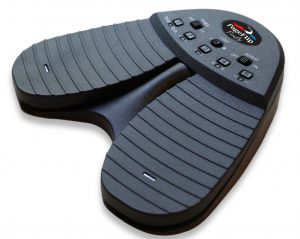
PageFlip Firefly £99
- Bluetooth 3
- Can also be connected using USB cable
- Illuminated pedals – switchable
- Easy to select keys using switches or programmed using Windows software
- Additional 2 pedals can be plugged in via 3.5mm jack sockets
- 2 x AA batteries 200hrs continuous use per set
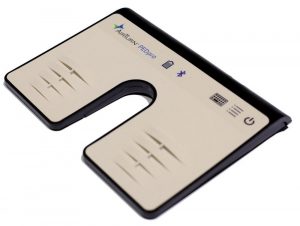
NEW! AirTurn PEDPro £69
- Bluetooth Smart 4.0
- Very light weight, low profile
- Pressure operated pedals
- Rechargeable battery
- Mode change button for different key presses
- Can be programmed with alternative keystrokes (Mac software)
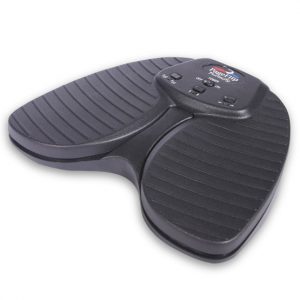
PageFlip Butterfly £79
- Bluetooth 3
- Easy to select key presses using switches
- 2 x AA batteries 200hrs continuous use per set
- Very sturdy construction
- Replacement for the PageFlip Cicada
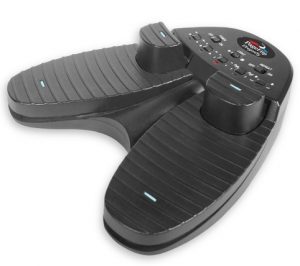
NEW! PageFlip Dragonfly QUAD £129
- Bluetooth 3
- Easy to select keys using switches, or programmed using Windows software
- 2 x AA batteries 200hrs continuous use per set
- Very sturdy construction, illuminated pedals
- Quad pedal can be used for page turning and moving through playlist
And Finally… It’s not a foot pedal but is another way of controlling page turning. These are very popular with organists whose feet are occupied with the pedal board.
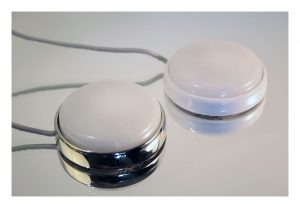
Programmable USB Button from £24
- USB cable – plug and play
- Can be programmed to any sequence of key presses using Windows Utility
- Illuminated – programmable, colour change when pressed
- Great for organists
Bluetooth adapters
I mentioned earlier that if your PC does not have Bluetooth or only Bluetooth 3 and you want to use a Bluetooth 4 device there is a USB Bluetooth “dongle” you can use. Its a plug-and-play device – just put it into any free USB socket and it can immediately be used to attach any Bluetooth device.
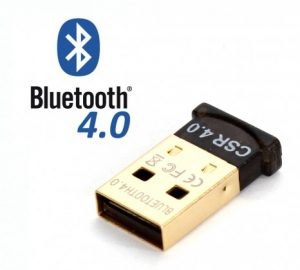
USB Bluetooth 4.0 adapter £5.99
- USB 1.1, 2 or 3
- For Windows 7, 8, and 10
- Plug-and-play automatically installs drivers from internet
- Works with all the above pedals
Airturn in the US supply a range of Bluetooth pedals in addition to the PED Pro.
I hope you found this post useful. There are several other page turners out there. If you use one and would like to write about it please post a comment below.

Hi there
after some research I found that a gaming pedal serves the same purpose and is cheaper, although the one I use are wired, not bluetooth.
I use a 3 pedal one at home set up as follows:
Left pedal – turn page back
Middle pedal – turn page forward
Right pedal – move on to next song.
And a 2 pedal one at church set up as follows:
Left pedal – turn page back
Right pedal- turn page forward/move on to next song.
As a keyboard player I find that this suits me down to the ground.
I think that, at the time, the 3 pedal cost me something in the region of £35 including postage as opposed to the Bilipro at around £50-£60. There were cheaper alternatives but not as well made.
I hope this is of interest.
Kind regards
Paul Reynolds
Hi Paul
Thanks for the comment.
When the BiLiPro stopped production, we did investigate another USB wired pedal – I think it is the ones that you are talking about.
The build quality was very poor and operating noise was unacceptable for most musicians. There was a load “clunk” when you pressed the pedal.
However if you are happy with the noise then this is the only USB solution we are aware of at the moment and it works well with Power Music.
Cheers
Gordon
Its Nice to see your post very helpful thanks for sharing